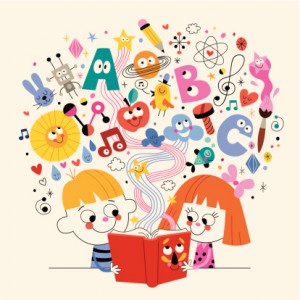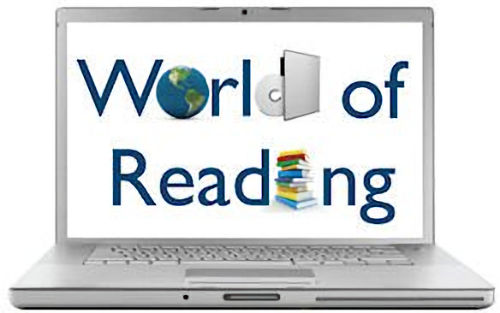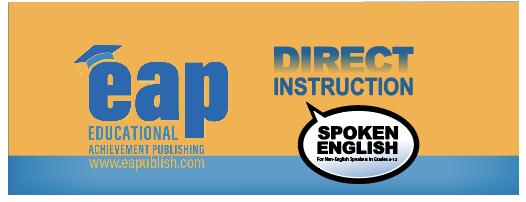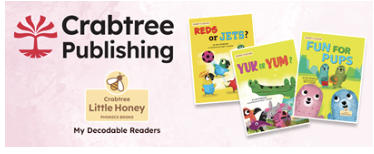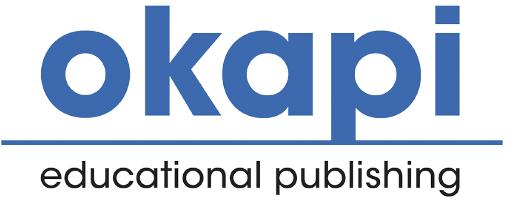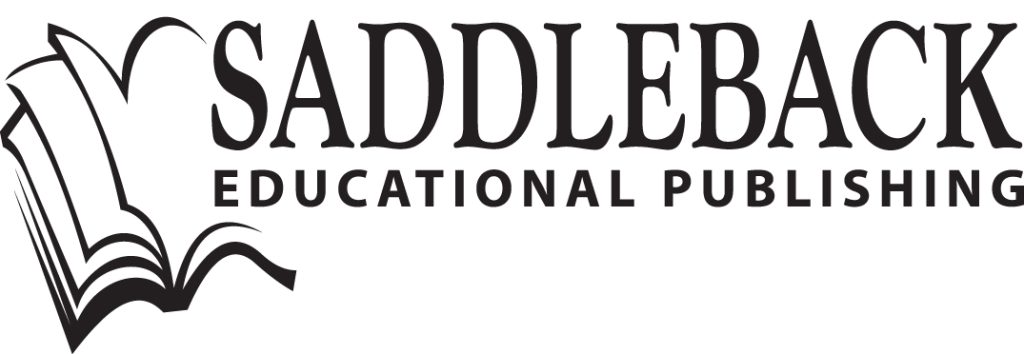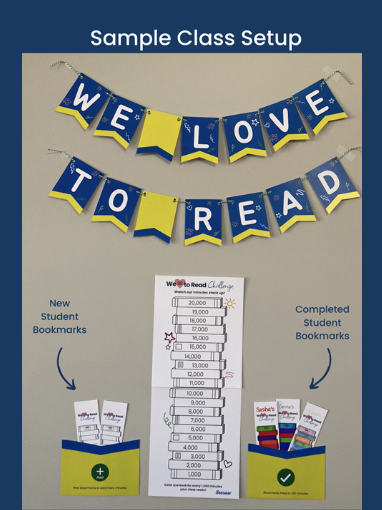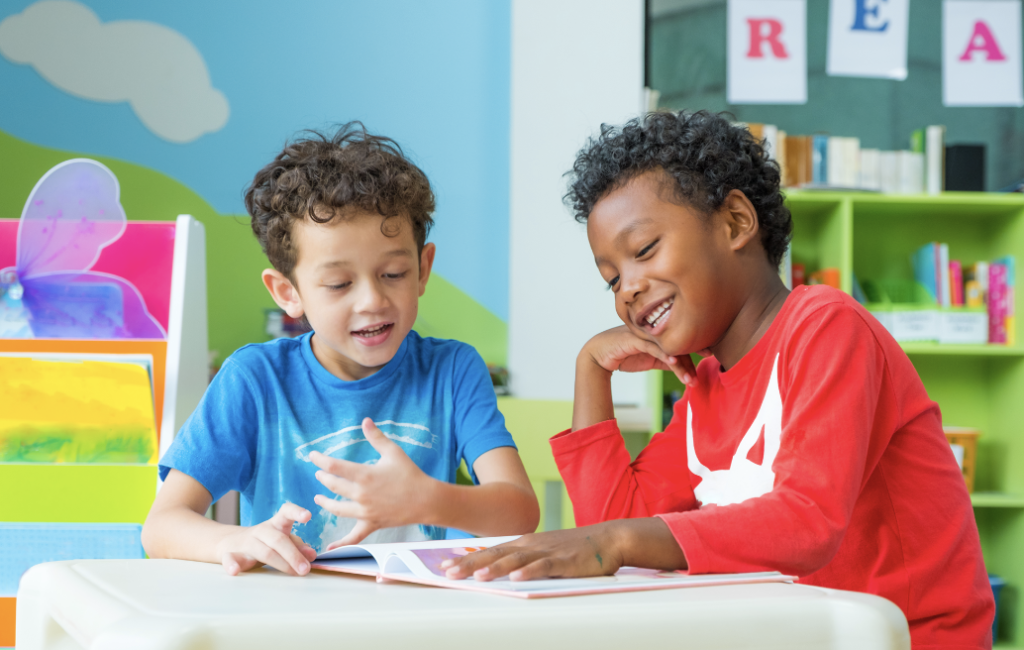
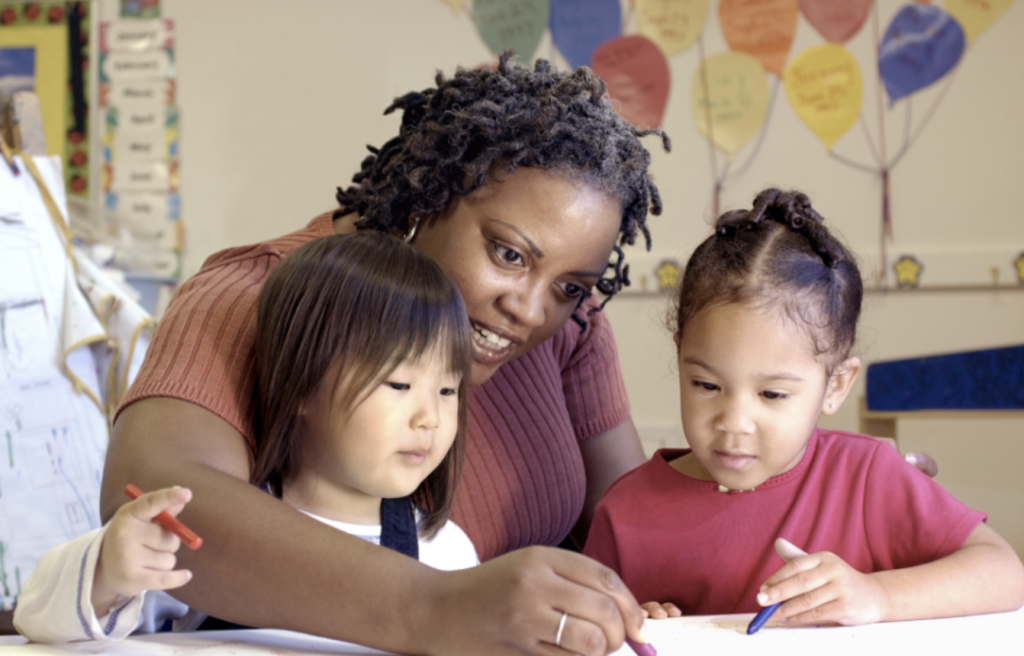
How did you spend much of 2020? Hours online? And then came 2021, being both easier and more challenging than we could have ever imagined. Many within and outside the education world agree that the pandemic was a catalyst for change for multiple reasons. It was no longer about how we use technology to provide access to daily lessons or to enhance content and language instruction for our students. Our focus has shifted from how to use technology to support multilingual learners to how to use technology to create digital-age learning ecosystems for them.
Designing complex learning ecologies to advance language development and content knowledge requires that we consider the way we want students to interact with one another, learn by doing, and express their ideas using digital learning resources (Rubin et al., 2022). In our work, we identify several of the key features of digital-age teaching for English learners (or DATELs; see Figure 1) and we advocate for building digital-age learning ecosystems for multilingual learners to accomplish the following:
- Increase social interaction and engagement
- Provide authentic communication and contextually rich language practice
- Reduce the affective filter so that more learning can occur
- Support scaffolded instruction through digital tools and media
- Incorporate all six literacy skills (listening, speaking, reading, writing, viewing, and visually representing)
- Emphasize the five Cs for 21st-century ELs (critical thinking, communication, collaboration, creativity, and culture)
Digital-Age Teaching for English Learners (DATELs)
Digital-age teaching for English learners (DATELs) is the outcome of our decade-long work with English learners (ELs) and technology. The DATELs framework represents a wide range of opportunities for technology integration inside and outside of the classroom setting. This framework encourages teachers of ELs to embrace a student-centered, technology-infused approach that increases opportunities for students to have authentic language-learning experiences by engaging in synchronous and asynchronous class activities.
The DATELs framework supports the development of academic skills and content knowledge while also developing language learning in a low-anxiety environment that increases social interaction among all levels of language learners. This framework shifts the focus from traditional direct-instruction models to project-based learning experiences that increase student agency and develop 21st-century skills. A DATELs approach also leverages the use of students’ home languages and cultural experiences every step of the way.
The Five Cs for 21st-Century Learning
The key features of DATELs promote the use of multiple modalities to engage in the five Cs of 21st-century learning: communication, collaboration, creativity, critical thinking, and culture. The P21 Framework (2019) led the way to the identification of the four 21st-century skills most important for K–12 learners. These skills became known as the four Cs.
However, we added a fifth C—culture—to include culturally responsive and sustaining practices that recognize and affirm the diversity that all learners bring to the classroom.
We encourage all educators to use the DATELs framework as a starting point to reflect on current practices and take first steps toward creating a digital-age learning environment for a new generation of ELs.
Increasing Student Agency and Engagement
The goal of the DATELs framework is to increase student engagement. Today’s teachers are curators of information and creators of digital content. They design tasks and projects that set groups of students on exciting, technology-infused learning journeys. The DATELs framework outlines the necessary components for an interactive, student-centered learning environment and invites teachers to shift their instructional models to transform classrooms into active learning laboratories. This requires an understanding of project-based learning.
Designing project-based learning activities with the needs of ELs in mind increases access to language-learning opportunities and supports students as they actively engage in the process. At the same time, it helps to bridge the digital divide by supporting the development of essential 21st-century skills. For project-based learning experiences to succeed, educators need to create a sense of belonging for ELs and challenge them to create a product or service to address a concern that connects PBL to their lives, interests, and surroundings (Rubin, 2022).
When designed with intention, your digital-age learning ecosystem will increase student collaboration and communication. Select digital resources that provide more opportunity for ELs to use the target language to accomplish tasks while working alongside their peers. Include carefully curated resources that incorporate multiple modalities to personalize learning and support culturally responsive and sustaining teaching practices.
Designing Your Digital-Age Learning Ecosystem
Carefully designed digital-age learning ecosystems provide students with flexible learning options and choice over how and when they complete tasks. This flexibility, along with curated resources, develops student agency and increases peer interaction. Before you begin to select the appropriate digital learning resources for your classroom, reflect on how these tools will promote student engagement and equitable access to assignments. Empowering students to create and publish multimedia, such as videos, podcasts, e-books, and blogs, helps them to organize and communicate their ideas more clearly and effectively and allows them to reach authentic audiences.
For ELs, the use of images, text, and audio and video assets not only facilitates the acquisition of content-area knowledge but also accelerates the language-learning process by providing a multisensory, multimedia experience for the student.
This type of learning environment promotes student voice and choice while considering the needs of each individual student. Include linguistic, social–emotional, and academic considerations in your decision-making process.
Then, select digital learning resources that you and your students can use together to accomplish a variety of tasks and learning goals.
Consider tools that target different needs, such as:
- Tools that encourage collaboration and communication between students
- Tools that allow teachers to manage lessons, create and share content, and connect with colleagues and parents
- Tools that give students the opportunity to be creative and demonstrate mastery
- Tools that develop language skills through all six modalities (listening, speaking, reading, writing, viewing, and visually representing)
- Tools that allow teachers and students to collect and share information with authentic audiences
Here is an example of categories and digital learning resources to consider when designing your classroom ecosystem:
Look carefully at the digital learning resources you are currently using and think about how you might refine your selections. Here are a few questions to consider:
- Which digital learning resources do you currently use? Why?
- In what way do the tools you have selected provide instructional support and more equitable access to learning experiences for English language learners?
- How do the tech tools you have chosen foster the five Cs for 21st-century learners?
- What digital literacy skills will your students develop while working within your digital-age learning ecosystem?
- What challenges do you face in designing and managing your digital-age learning ecosystem? What type of support would be helpful?
Supporting All Six Literacy Domains
Utilizing digital resources not only can help reduce language barriers but also develops students’ abilities to interpret and utilize multiliteracies via the six literacy domains. In 1996, the New London Group coined the term multiliteracies to address how cultural, communicative, and technological changes were impacting educational practices in a globalized society. In 2014, Boche described multiliteracies as follows:
“Multiliteracies recognizes both the increasing cultural and linguistic diversity in the new globalized society and the new variety of text forms from multiple communicative technologies. There is also the need for new skills to operate successfully in the changing literate and increasingly diversified social environment” (p. 116).
To develop the six literacy domains for the 21st-century language learner, educators need to design learning experiences that provide students with multiple ways to access content and express their ideas, while making connections to spoken and written language through the use of multiple modalities and multiliteracies. Here are a few ideas to think about when designing instruction and integrating technology to support the development of receptive and expressive literacy skills.
Receptive Skills
- Listening
Digital media offers ELs the opportunity to listen to authentic language with the ability to control the rate and to pause and repeat the listening activity. ELs can listen to language lessons, story read-alouds, news reports, interviews, and a wide variety of podcasts at any grade level and in multiple languages to experience the target language in context. Platforms like Wonderopolis, News-O-Matic, and Podbean provide various listening opportunities for students. - Reading
English learners can use electronic texts and e-books to interpret and relate information to their own personal experiences. Online digital resources such as Newsela, TumbleBooks, and Common Lit provide information to ELs at a reading level that’s right for them. - Viewing
Viewing requires skills similar to reading comprehension for English learners. Viewing can include everything from images to video presentations. Instructional videos, images, and resources found in platforms such as Discovery Education, Khan Academy, TedED, and YouTube provide multiple modalities for ELs to gain understanding of concepts.
Expressive Skills
- Speaking
English learners can express thoughts and ideas clearly and effectively using various forms of digital media to communicate orally. Students can record their own podcasts, provide audio feedback to peers, and narrate digital stories by making use of tools like GarageBand, Anchor, Kaizena, and VoiceThread. - Writing
English learners can communicate through print by using digital learning resources in everyday writing tasks. Students can be authors of e-books, class websites, and blogs. Students can practice writing skills in a more supportive and low-anxiety environment in mediated social networking chats with peers. Platforms such as Storybird, Weebly, Edublogs, and Perusall facilitate writing and collaboration. - Visually Representing
This form of communication requires ELs to collect and organize information, decide on the best way to convey it to others, and produce a visual product to accomplish this communication, often incorporating print and sound (including speech) with the visual images. Tools such as Screencastify, ThingLink, Educreations, and Instagram facilitate communication through the use of visual imagery.
Multiple Forms of Assessment
The digital-age learning environment ensures that ELs have authentic learning experiences, digital tools that facilitate student learning, and multiple ways to show their success in the classroom. When teachers design assessments that include technology, ELs have more ways to demonstrate their learning and more ways to experience success.
A well-designed digital-age learning ecosystem helps transform many traditional assessment practices to assets-based models that better inform instruction and more accurately reflect academic progress. By using multiple forms of assessment, teachers can target students’ performance more effectively, provide modifications and accommodations, and engage in meaningful conversations with students. In a student-centered learning space, those conversations start by creating positive feedback loops.
Hattie (2009) suggests, “The teacher provides supportive feedback and helps students to learn by acknowledging and using the student’s prior knowledge and experiences, and monitoring to check if students know what is being taught, what is learnt, or what is produced” (p. 6).
This is one essential element for assessment. Another essential assessment practice for the digital age is the use of student-created learning portfolios that provide evidence of mastery and measure student growth over time.
Authentic assessments that incorporate digital learning resources and set clear expectations allow ELs to show what they know and what they have accomplished. Teachers can design equitable and fair assessments that are scaffolded to provide multiple access points to content while lowering the language barrier, thereby making learning more visible.
Digital resources can deliver content and assess student performance in ways that traditional methods cannot for ELs. Traditional methods are largely text-based and limit ELs from participating effectively in academic discourse. When the right technology tool is integrated into content-rich, collaborative learning activities and assessments, it provides multisensory access to that content and increases student engagement and motivation.
The following are some ideas to effectively implement technology to deliver content and to assess student performance.
The use of video discussion platforms like Flip encourages ELs to capture their ideas to post video responses to classroom topics. Student-created speaking rubrics can assess content knowledge and language skills and allow students to take ownership of their learning.
Technology resources and online polling tools allow for comprehension checks. Resources such as Google Forms, Kahoot!, Quizizz, Quizlet, and Gimkit can show what students have learned, increase participation for ELs, and inform instruction.
Virtual collaboration boards like Padlet, Jamboard, and Exit Ticket allow students to easily share their work by posting text, images, links, or videos to answer questions, extend discussions, and demonstrate what they’ve retained at the end of a lesson.
Digital portfolios such as Seesaw empower ELs to document their learning by inserting images, videos, drawings, texts, links, and voice recordings to reflect, revise, and complete their work. Students are given a voice and a choice when selecting the work they feel best represents their learning over the course of the school year.
When teachers design authentic assessments and set achievable goals and outcomes, it not only improves instructional practices but supports student growth and diversity. It is essential that teachers implement fair and equitable assessments to ensure progress is measured and the integration of technology prepares our students for the future.
Conclusion
As we reflect on how best to prepare our English learners for the digital age, we must consider how we provide all learners with equitable access to content knowledge and 21st-century skills within a culturally responsive and sustaining environment. We must also ensure that students can transfer their newly acquired knowledge to career skills and lifelong learning. This type of student-centered learning requires the use of creative, original thinking to find solutions to real-life problems. An important step toward achieving this type of classroom is the intentional design of digital-age learning ecologies that develop multiliteracies and incorporate multimodalities for our 21st-century language learners.
References
Boche, B. (2014). “Multiliteracies in the Classroom: Emerging conceptions of first-year teachers.” Journal of Language and Literacy Education [Online], 10(1), 114–135. http://jolle.coe.uga.edu
Hattie, J. (2009). Visible Learning: A Synthesis of Over 800 Meta-Analyses Relating to Achievement. Routledge.
New London Group. (1996). “A Pedagogy of Multiliteracies: Designing social futures.” Harvard Educational Review, 66(1), 60–93. https://doi.org/10.17763/haer.66.1.17370n67v22j160u
Partnership for 21st Century Learning (2019). “Framework for 21st Century Learning.” www.battelleforkids.org/networks/p21/frameworks-resources
Rubin H., Estrada, L., and Honigsfeld, A. (2022). Digital-Age Teaching for English Learners: A Guide to Equitable Learning for All Students. Corwin Press.
Rubin, H. (2022). “PBL and ELs: An essential practice for equity and digital age teaching.” Corwin Connect. https://corwin-connect.com/2022/01/pbl-and-els-an-essential-practice-for-equity-and-digital-age-teaching
Heather Rubin is an administrator for the NYSED L.I. RBERN at Eastern Suffolk BOCES, where she designs professional learning experiences for K–12 educators.
Andrea Honigsfeld is TESOL professor at Molloy University and author/consultant. https://andreahonigsfeld.com
Lisa Estrada is the former supervisor of TESOL, bilingual education, and world languages in Hicksville Public Schools.








